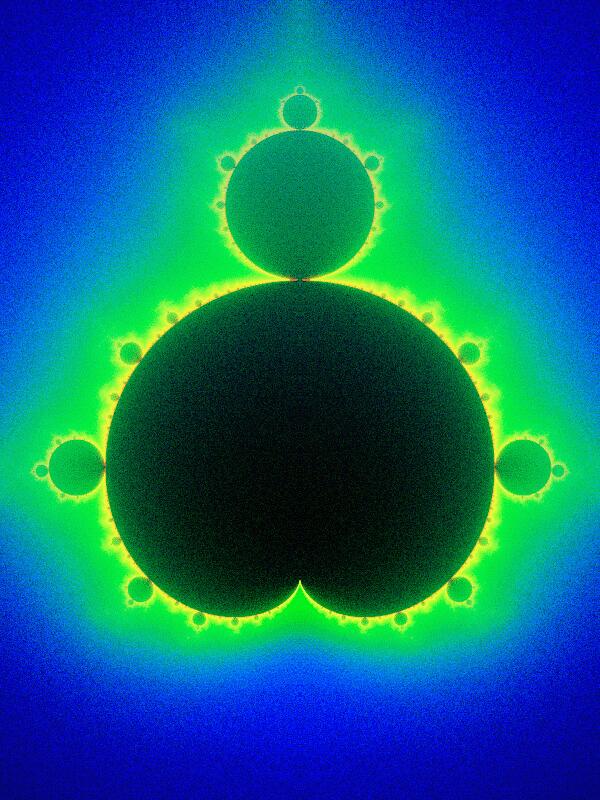| Previous Plane | Inside the M-Set | Next Plane |

This looks just like the original Mandelbrot set! When you think about this it is not difficult to see why. Even though initial points are chosen randomly, only the counter for that pixel will get beaten on during iteration of it's corresponding random initial Z. The number of times a given pixel gets hit is exactly the sum of the lengths of the trajectories that start within that pixel.
So have we simply found another way to render the familiar old Mandelbrot image? Not quite. If you look closely at the black regions you'll note that they're not completely black. But wait, how can that be since in the Buddhabrot technique we ignore points found to be within the Mandelbrot set? The answer is "no" because when we use the holographic technique, we begin with random initial Z values in addition to the random C values. This makes it possible for some points with initial C values inside the Mandelbrot set to eventually escape. When you think about it, this also explains why there are no completely black areas in the original Buddhabrot images. That's because Z iterates that wander deep into the Mandelbrot set regions can still find their ways out because their coresponding C values are outside of those regions.
Continuing the 3D data box analogy, this last image is essentially the other front-to-back view. This shows the very intimate relationship between the Mandelbrot and Buddhabrot techniques. They are very nearly two different ways of rendering the identical 4D objects. If you like, you can obviously generate Mandelbrot images using the Buddhabrot technique if you simply restrict your initial random points to all lie on the Z = 0 plane. Looked at this way, Mandelbrot and Julia images represent single 2D cross-sections of the 4D data box and ignoring the rest. The full 4D space rendered here can be thought of at the fundimental domain of the Mandelbrot/Julia set objects and might even provide a more natural way of defining them.